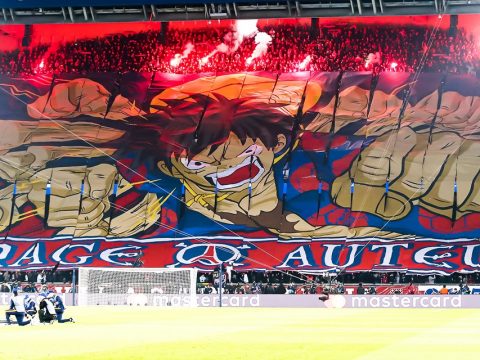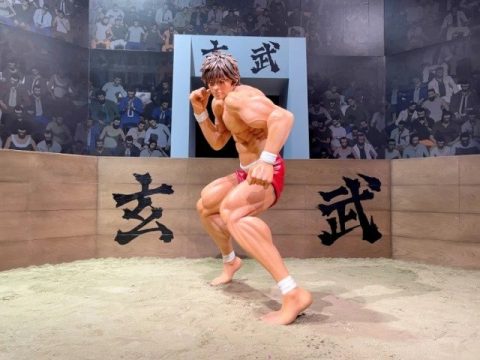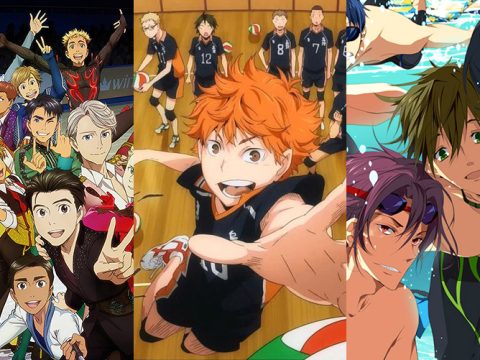
The second box set of Baki the Grappler, based on Keisuke Itagaki’s 1991 manga of the same name (the original run of which was serialized through ’99), finds the titular young man a much more established fighter. Regardless of the constant cheers he receives whenever he’s in the ring, he’s not satisfied just resting on the laurels of his past victories, and is currently embroiled in the competition that will serve to both defend his title and give this “season” the incredibly straightforward name, Grappler Baki Maximum Tournament.
That ain’t no lie either, folks. A lot of series have been dubbed “tournament” shows, but Baki takes that moniker to the extreme. All 24 episodes in the set are wall-to-wall fighting, and if matches aren’t going on at the moment, they’re either being set up, or flashbacks are momentarily taking their place in an effort to further establish the motivations behind certain competitors. Anyone not prepared to sit down and soak up roughly 600 minutes of extreme unarmed combat best check out early and leave the door open a crack for the next brave viewer.
For everyone still here, Baki‘s tournament is indeed as MAXIMUM as it claims to be. One of the first fighters we run into is wrestler Roland Gustaf, the “joint specialist.” Through a flashback, we’re given a glimpse of Roland as a child sitting amongst scattered pieces of torn machinery. When scolded, he pleads in response, “I can’t help myself when I see something connected or stuck together!” His “joint allergy,” as it’s called, made him take apart everything he saw. He even once went to Africa to wrestle a LION for this very purpose. I’ll let that sink in for a moment.

The crazy characters enter the ring rapid-fire once you get into the groove of watching the show, and there’s zero breather between most of the matchups. If a fight ends before the commercial break, BAM, they’ve already zapped us over to the next block to see who proceeds upwards through the bracket like we’ve returned to the days of climbing the Mortal Kombat II ladder of splatter.
And then there’s Baki’s father, known as The Ogre, who can practically kill someone with the flick of a finger. Actually, he really does fight someone with his pointer and middle finger only at one point. Elsewhere, a badass bouncer named “Richard Filth” has a record of 2,000 wins and no losses—this is the world our characters live and die in. I’ve heard talk of Baki being a “real martial arts show,” and that’s partly true. I mean, there are real martial arts represented in the series, from Krav Maga to good ol’ Ka-rah-tay, but the execution of each is about as real as the hadooouuuken screaming from the mouths of Ryu and Ken in every Street Fighter game.
That’s fine, because it works to Baki‘s advantage. I don’t know if I would have found myself sitting through the series if it didn’t sport its own unique style of brutality, but it does, making it kind of hard to believe that the DVDs sport a TVPG rating on them. While Baki isn’t really gory, per se, it’s loaded with the more intense side of fighting: the multiple broken bones, the battered bodies, the torn… nerves (you guessed it, the nerve-cutting technique is alive and well in this follow-up). For some reason, it provides way more winces than the severed heads and bursting limbs of more fantastic shows.

With that said, it’s hard not to get sucked into the seedy martial arts action if you’ve got the patience to watch nothing but. Still, it would be even easier were the animation more fluid and the art more attractive. The first issue is most regrettable because it shows the fact that the series came out during an awkward period for Japanese animation. In 2001 a lot was changing and, visually speaking, Baki is very much a victim of the times. It’s stiff, yet has a contrastingly polished look to it. Animation outside of the ring is all but nonexistent, and inside the ring it’s incredibly uneven. A fluid, screen-rocking kick could at any moment be followed by a crudely animated spin in mid-air, and so on.
The second issue has more to do with the difficulty of translating Keisuke Itagaki’s unique art style into an animated format. While bodies and faces have a very weird flair in the manga, they just tend to come off as the work of an unskilled artist in the anime. Because the panels in Baki the Grappler were already suited to portraying extreme and graceful motion through the contorted stances and joint-defying poses of the fighters, it all looks sort of stupid in motion at times.
It doesn’t help that the locale switches very rarely. Due to the nature of the subject matter, we’re almost always staring at a backdrop that would look more at home in the 1990 arcade brawler Pit Fighter. To overcome the visual drawbacks, the audience really needs to invest in a good deal of the fighters, not just Baki. It’s been a while since I read the original manga, but I don’t recall Baki being quite so wooden and  borderline unlikable. He’s not even featured too often in the first half of this set, and if the other featured back-breakers weren’t such a colorful lot, there would really be no hope for the show.
borderline unlikable. He’s not even featured too often in the first half of this set, and if the other featured back-breakers weren’t such a colorful lot, there would really be no hope for the show.
But they are, and after looking past the limited animation, the fights can be pretty engrossing. One can’t help but cheer the insane gang leader on as he breaks his own left arm in multiple spots and continues to fight, screaming defiantly all the while. When a non-sumo-wrestler challenges a Yokozuna to a sumo match, you’ll probably be inclined to stick around and see what happens. Just keep in mind that there is literally no attraction to this series outside of the featured fights. If you don’t care who wins or who loses, and especially if you didn’t follow the series before this, you’re better off spending your hard-earned money elsewhere. For everyone else—and I’m looking squarely at you established Baki fans—this is an affordable box full of more cracked body parts than a year’s worth of MMA pay-per-views.
Studio/Company: FUNimation Entertainment
Available: Now
Rating: TVPG







